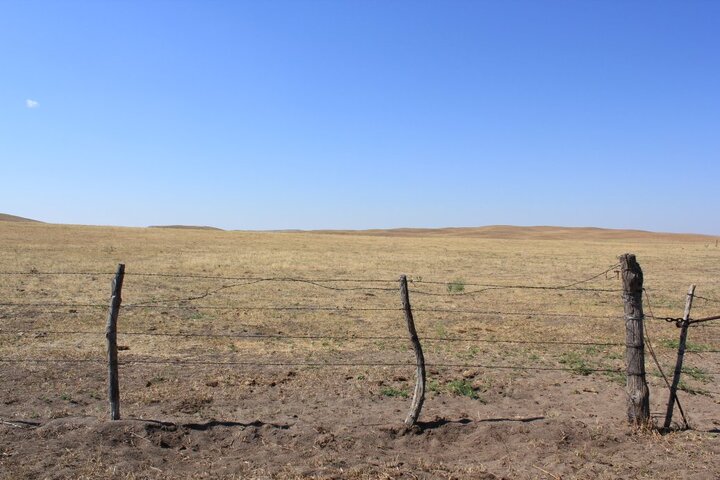Few words cause as much concern for those with pasture or rangeland as drought. In 2012 when the latest widespread drought covered most of the state, some of the most difficult conversations were occurring between landowners with pasture and their tenants.
Without rain to fuel growth, pastures during drought can easily be overgrazed, impacting future production in the pasture for years down the road. Landlords are often willing to take less rent from the tenant in these circumstances in order to prevent this from happening. On the flip side, tenants with leases that run into the fall, often don’t have another location for their animals to go. Even with a lowered rent bill, they are faced with finding an alternative location for animals and paying for supplemental feed. To add to these woes, hay prices during droughts often soar, making the feed bill for animals taken off pasture even higher.
No Clause in the Lease
In recent years, many verbal and written lease arrangements have not had to address removing livestock due to generally adequate moisture across Nebraska. Many landlords or tenants have not discussed plans for properties in the event of a drought and shortfall in forage. Without specifically addressing a livestock removal clause in a verbal or written lease, either party may have limited options in dealing with drought on grazing land. If a tenant did remove the livestock from the property, the lease may not address any reduction or partial refund in the final rental payment. This situation leaves the landlord and tenant with few choices to resolve the situation. Leaving the livestock on the property might lead to damages to the range. Removing the livestock and requiring a full rental payment in addition to securing additional forages may lead to a financial hardship.
An amendment can be added to a current lease if both parties agree to the changes. These changes should be documented in writing and signed off on by all parties involved. In the event a mutually agreed upon solution cannot be reached by the parties involved, soliciting legal advice from practicing attorneys may be advisable.
Lease Clause
While there isn’t much that can be done about a contract that has already been entered into if both parties cannot agree, making plans for future droughts can make handling future disaster situations easier. Simply put, this clause can state that the tenant is required to remove animals when conditions get too dry and that the rent owed will be adjusted accordingly. And while drought may be the primary reason cattle need to be pulled from a pasture, it’s easy to adjust a “drought clause” into a “disaster clause” that would include other forage reducing events like wildfire or hail.
While this may seem like a simple addition to make, spending a bit more time to lay out how the decision to pull animals out will be made can further help with difficult future decisions. Is this solely a right reserved for the landowner or are other voices involved? If production is reduced, maybe a portion of the pasture can be offered as a “sacrifice area” to help the tenant out with an area to confine animals for supplementation. Finally, does the prior year’s grazing impact management the following year? Re-growth following a drought may be slow, especially if it’s a multi-year event. Does the stocking rate need to be reduced or turn out date delayed to provide the pasture time to recover?
Drought can also impact some things not directly tied to the pasture’s grazing. Natural water sources, especially dams and dugouts may dry up with low precipitation and require water to be hauled to animals. How will this cost be addressed?
Stressed pastures following drought are also more susceptible to invasion by weedy species. If the burden of weed control increases drastically following a drought, the original agreement addressing labor and resources to manage weeds may need to be restructured.
Settling on a lease agreement that works for the landowner and tenant is always a time for communication and cooperation. Each lease is unique and solutions to these issues need to fit the unique relationship between the parties involved.
Impact of Early Removal on Disaster or Insurance Assistance
During periods of extended drought, financial assistance for livestock producers may be available from programs administrated by the United States Department of Agriculture (USDA). The Livestock Forage Disaster Program provides financial assistance to livestock operators during periods of extended drought documented by the United States Drought Monitor. Pasture, Range, and Forage Insurance provides coverage to an operator in the event of limited rainfall during certain periods of the year.
Early removal of livestock from a property along with the reduction in rent may limit the ability of an operator to participate and receive financial assistance or indemnities due to drought related conditions. USDA-Farm Service Agency offices and insurance provider can offer guidance to the landlord and tenant on designing appropriate lease provisions for addressing drought while remaining in compliance with these two programs.
Drought in Nebraska is unfortunately part of life. While its impact on pastures will never be enjoyable, planning ahead can reduce the stress dry conditions present. Open communication and clear expectations will make decision making easier. The conversation may not be fun, but take time to consider all aspects that a drought could impact, from long term pasture health to animal well-being to financial aid. In the end, a bit of time and discomfort now can save major headaches the next time dry weather strikes.
Interviews with the authors of BeefWatch newsletter articles become available throughout the month of publication and are accessible at https://go.unl.edu/podcast.
Topics covered:
Pasture & range, Grazing systems & best practices, Marketing, budgets & management, Leases, Weather, Drought

